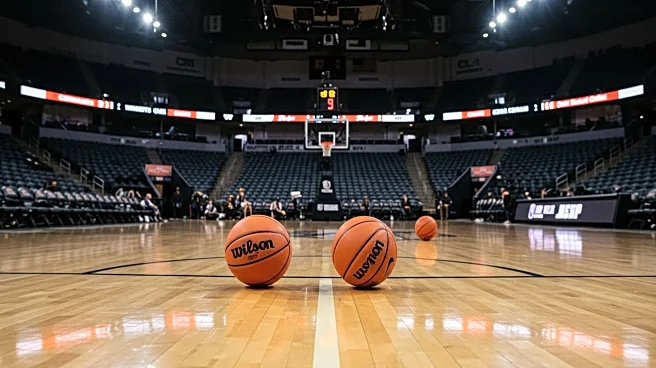What's Happening?
Mid-major basketball programs are increasingly becoming stepping stones for players aiming to transfer to high-major schools, a trend accelerated by the transfer portal era. Coaches like Ron Hunter of Tulane and Andy Kennedy of UAB are adapting to this reality by leveraging their programs as launchpads for players seeking to advance to elite college basketball teams. This shift is exemplified by players such as Sion James and Kam Williams, who began their careers at mid-major schools before transferring to high-major programs. The transfer portal, introduced in 2018, has facilitated this movement, allowing players to pursue professional goals by transferring to more prominent colleges. The introduction of name, image, and likeness (NIL) deals in 2021 has further incentivized transfers, offering financial opportunities that many mid-major schools cannot match.
Why It's Important?
The adaptation of mid-major programs to the transfer portal era has significant implications for college basketball. It creates a feeder system where mid-major schools serve as developmental grounds for players who eventually move to high-major programs. This trend impacts player recruitment strategies, as mid-major coaches must balance developing talent with the likelihood of losing players to more prestigious schools. The financial aspect, driven by NIL deals, adds another layer of complexity, as high-major programs can offer substantial financial incentives. This dynamic affects the competitive balance in college basketball, with mid-major programs needing to innovate to remain competitive. The shift also influences the career trajectories of players, offering them pathways to higher visibility and potential professional opportunities.
What's Next?
As the transfer portal continues to evolve, mid-major programs may increasingly formalize relationships with high-major schools, akin to a farm system in professional sports. Coaches like Sundance Wicks of Wyoming envision collaborations that could benefit both players and programs. Revenue-sharing rules may also help mid-major schools offer more competitive financial packages, potentially reducing the gap between them and high-major programs. However, the ongoing challenge will be maintaining team cohesion and success amid frequent player transfers. Coaches will need to refine their recruitment pitches, emphasizing unique program attributes beyond financial incentives, to attract and retain talent.
Beyond the Headlines
The ethical implications of the transfer portal era are noteworthy, as mid-major coaches face dilemmas regarding player development and retention. The potential for high-major programs to court players during the season raises questions about fair play and the integrity of college sports. Additionally, the focus on financial incentives may overshadow other valuable aspects of college athletics, such as education and community engagement. As the landscape continues to shift, stakeholders must consider the long-term impact on the culture and values of college basketball.











